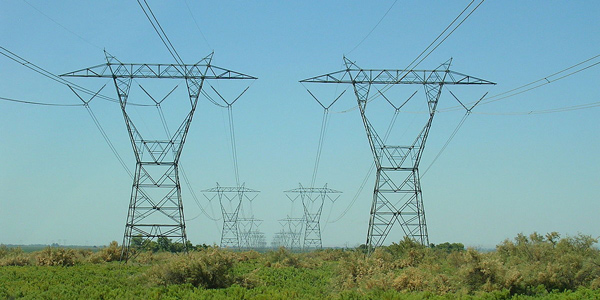By Jason Fordney
FERC last week upheld a previous ruling covering transmission cost allocation in the WestConnect planning region, adding further explanation of its reasoning after a federal court remanded the issue back to it for more information.
The issue stems from an October 2012 compliance filing that WestConnect utilities submitted in response to FERC Order 1000, the 2011 rule governing regional transmission planning and cost allocation. The group’s planning region covers Arizona, California, Colorado, Nevada, New Mexico, South Dakota, Texas and Wyoming.
The utilities’ initial compliance filing included a provision stipulating that costs for projects selected in a regional plan would be allocated only to beneficiaries who agreed to participate in those projects. Other WestConnect members participating in the planning process would not be obligated to pay for those projects’ costs, a measure designed to avoid discouraging nonpublic utility transmission providers from participating in planning.
FERC found that WestConnect’s “non-binding” process did not comply with Order 1000, which prohibits any planning participants from claiming an exemption from cost allocation merely by asserting they receive no benefits from the resulting transmission infrastructure. The commission noted that the “fundamental driver” of Order 1000 was to minimize “free ridership” within the system.
In response to FERC’s rejection, the utilities submitted a second compliance filing containing a new proposal to create separate categories of transmission providers eligible to participate in the WestConnect process: “enrolled” transmission owners subject to the entirety of the Order 1000 process, and “coordinating” TOs — nonpublic utility providers — not subject to regional cost allocation but able to participate in planning. FERC denied a rehearing on that plan and two subsequent proposals that the commission found were similarly deficient in meeting Order 1000 cost allocation requirements. In November 2014 and May 2015, El Paso Electric petitioned the 5th U.S. Circuit Court of Appeals to review the compliance orders.
The 5th Circuit remanded the orders in August 2016 for “additional factual findings” on WestConnect’s planning process, saying the commission’s mandates regarding the role of nonpublic utility transmission providers were arbitrary and capricious, and that FERC had not shown its orders would not produce unjust rates.
FERC last week declined to change its original finding, saying it “continues to conclude that the approach it ultimately accepted in the compliance orders satisfies Order 1000 while taking into account the uniquely integrated nature of public and nonpublic utility transmission systems in the WestConnect transmission planning region” (ER1375-011, et al.).
The commission determined that its original decision “appropriately” considered the “unique characteristics” of the WestConnect region when determining how to address the participation of nonpublic utility transmission providers in the region’s planning process. It noted that some public utilities in the region are connected together by transmission wholly or partially owned by nonpublic providers and that regional planning would be “hampered” without the participation of the latter.
“We find no basis in the record to conclude that, if presented with [the] choice, any nonpublic utility transmission provider in the WestConnect region would voluntarily choose to enroll and subject themselves to binding cost allocation,” the commission said. “Their decision not to enroll would mean that, under this approach, WestConnect would not conduct transmission planning to meet the nonpublic utility transmission providers’ transmission needs.”
While the outcome of WestConnect’s initial approach would comply with Order 1000, it would also “undermine” the order’s goals, the commission said.
The WestConnect utilities included Arizona Public Service; Black Hills Power; Basin Electric Power Cooperative; Powder River Electric Cooperative; Black Hills Colorado Electric Utility; Cheyenne Light, Fuel, & Power; El Paso Electric; NV Energy; and Xcel Energy Services on behalf of Public Service Company of Colorado, Public Service Company of New Mexico, Tucson Electric Power and UNS Electric.
In other decisions last week, FERC:
-
Western Energy Imbalance Market Participants | CAISOAccepted APS’ compliance filing for its participation in the Western Energy Imbalance Market (EIM) operated by CAISO. The utility revised its tariff to address directives by FERC in a Sept. 26 order. The commission accepted APS’ proposal to allow external resources to participate in the EIM via dynamic scheduling, subject to a further compliance filing, and the utility’s proposal to reflect payments and charges from CAISO in a future rate proceeding (ER16-938).
- Rejected a complaint filed by transmission customers of Pacific Gas and Electric over a proposed rate increase. Complainants said the utility’s stated costs were not justified and argued for a rate decrease, but FERC said they had not met the burden for a complaint and did not introduce any new evidence over the rates approved by the commission in a November 2016 settlement. Complaining parties included the Transmission Agency of Northern California; the city of Santa Clara, Calif.; the M-S-R Public Power Agency; the State Water Contractors; the California Public Utilities Commission; the Modesto Irrigation District; and the Sacramento Municipal Utility District (EL17-59)





